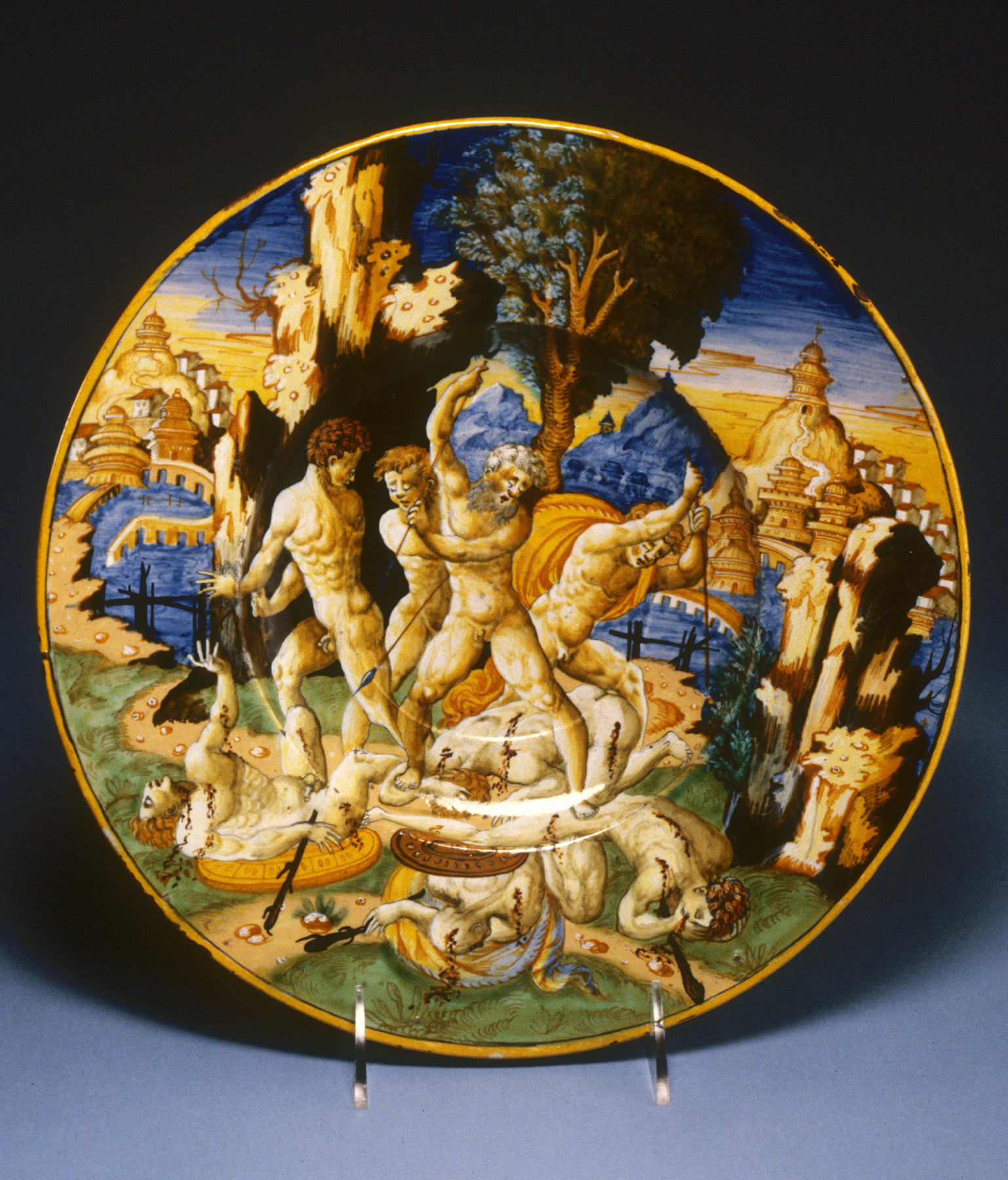Plate with Samson Killing the Philistines
(Renaissance Europe )
In this scene, Samson stands on top of four slaughtered Philistines. With both hands he holds the spear that he used to kill them. Samson was a traditional emblem of virtue during the Renaissance period, and his slaying of the Philistines symbolized the triumph of good over evil. This subject is representative of maiolica wares painted in the “istoriato” style, which focused on stories from Classical antiquity or the Bible that provided a lesson. The exaggerated musculature and twisted bodies of Samson and the Philistines reflects contemporary Mannerist painting styles, and the violent action is set off by the serenity of the landscape.The back of the plate is stained with green and decorated with three concentric yellow circles; in the center an inscription painted in blue, "desanson ei fili/stei" identifies the scene depicted on the plate's obverse side.This plate was likely made in the workshop of Girolamo Lanfranco the elder, a maiolica painter from the town of Pesaro. For more on ‘maiolica’, see 48.1336.
Inscription
Provenance
Provenance (from the French provenir, 'to come from/forth') is the chronology of the ownership, custody, or location of a historical object. Learn more about provenance at the Walters.
H. Wencke Collection, Hamburg [date and mode of acquisition unknown] [no. 15] (?); Seligmann, Paris [date and mode of acquisition unknown]; Henry Walters, Baltimore, May 7, 1908, by purchase; Walters Art Museum, 1931, by bequest.
Geographies
Italy, Pesaro (Place of Origin)
Measurements
1 5/8 x 11 3/4 in. (4.1 x 29.8 cm)
Credit Line
Acquired by Henry Walters, 1908
Location in Museum
Accession Number
In libraries, galleries, museums, and archives, an accession number is a unique identifier assigned to each object in the collection.
In libraries, galleries, museums, and archives, an accession number is a unique identifier assigned to each object in the collection.
48.1325




